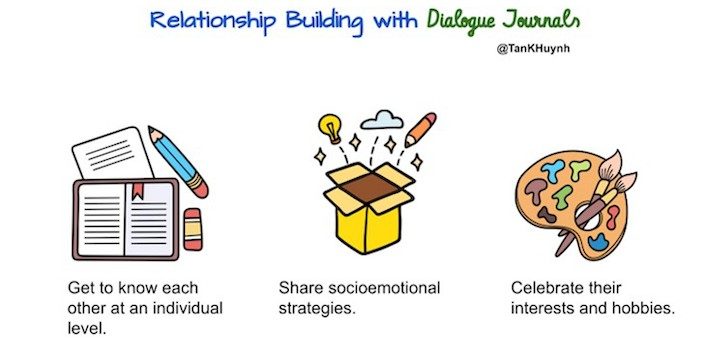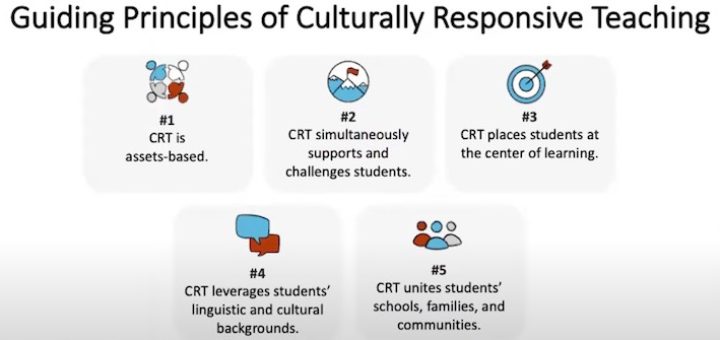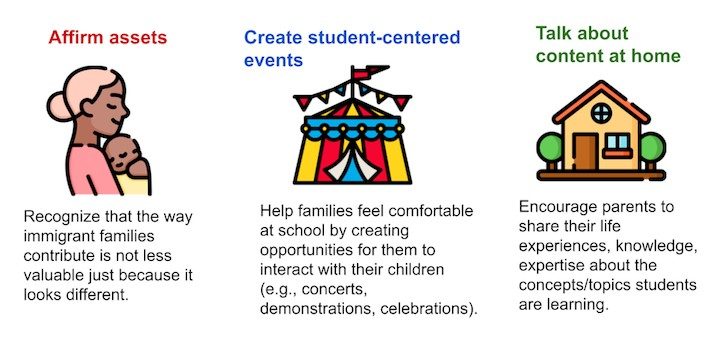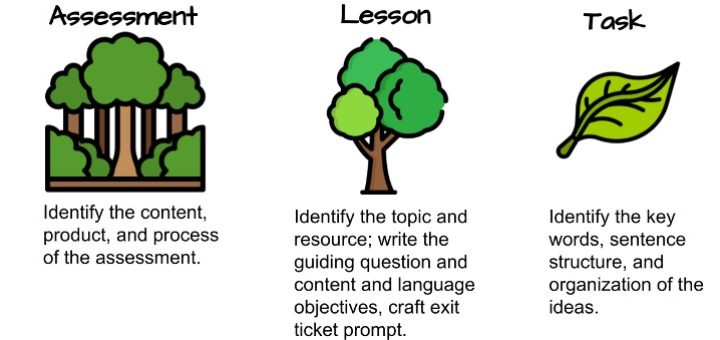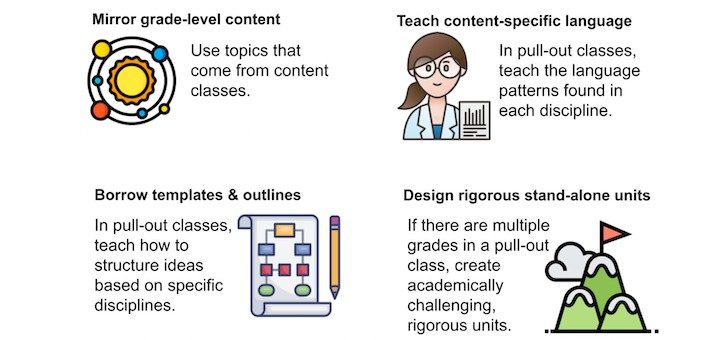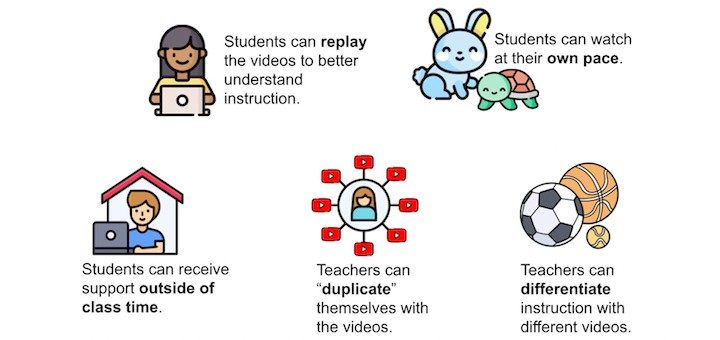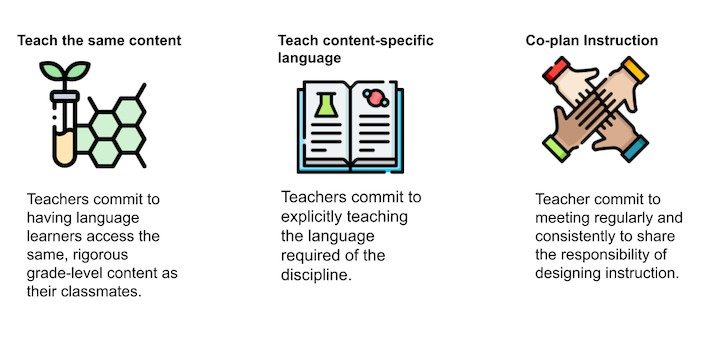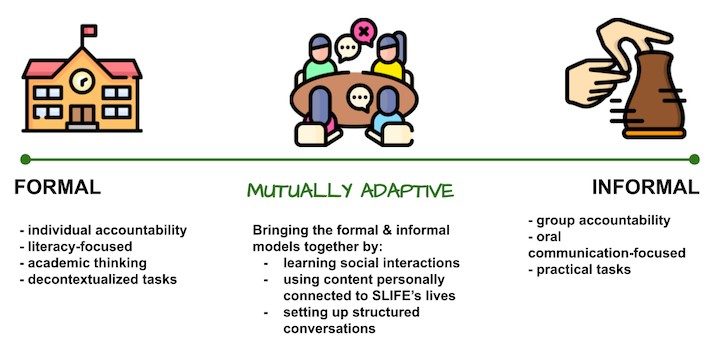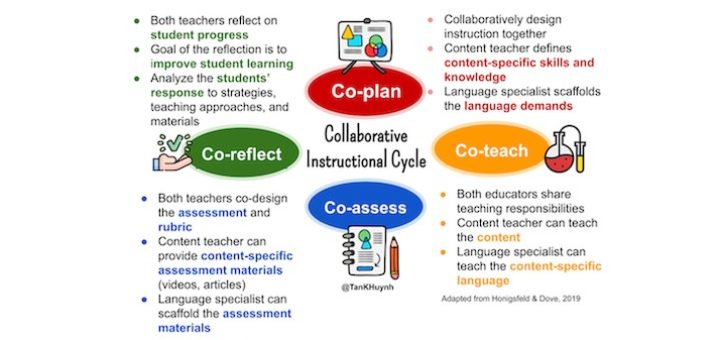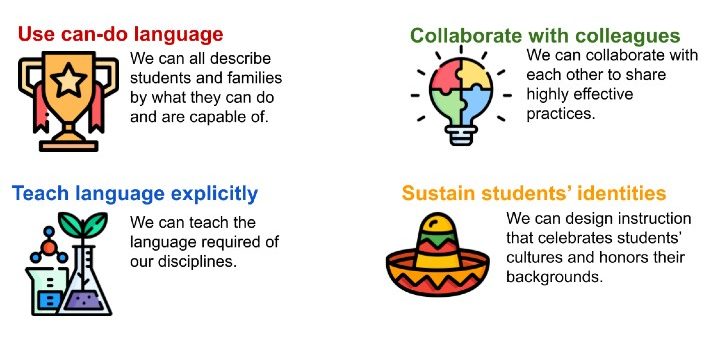Category: The Unstoppable ML Teacher
A strengths-based approach to teaching multilinguals means understanding what students bring to schools. We can use dialogue journals to invite students to have a conversation with us about their strengths. Tan Huynh shares how he implements the weekly exchange of notes.
Culturally Responsive Teaching is not a fad. It’s not one more thing we have to do for multilinguals, writes Tan Huynh. It’s a way of designing instruction for ML/EL/ESL learners that’s grounded in the assets of students, their families, and their communities.
Rather than fixating on immigrant parents’ economic conditions and languages as deficits and labeling them as unable to contribute to their children’s education, ML specialist Tan Huynh advocates for an assets-affirming narrative, sharing the instructive story of his own mother.
Language specialist Tan Huynh shares the process he’s developed to plan a unit for multilingual learners (and all students). Begin with the assessment – the global “forest” view of the unit – then the trees (lessons) and leaves (tasks). Tan walks you through each stage.
Co-teaching is the preferred way to serve multilinguals, but it’s not the only way to collaborate with colleagues. Language specialist Tan Huynh shows how we can make pull-out services more impactful with co-planning that emphasizes both grade-level content and language skills.
Language specialist Tan Huynh explains how to use short teacher-made video tutorials to ‘duplicate’ yourself so you can be ‘in 20 places at once’ – responding to students’ questions during class and providing support at home and in study hall. A real help to multilinguals.
Drawing on the work of co-teaching expert Anne Beninghof, language specialist Tan Huynh shows how three essential commitments of co-teaching can ground collaborative work. Tan focuses on teaching the same content, using content-specific language, and co-planning instruction.
Students with limited or interrupted formal education (SLIFE) benefit when teachers consider how SLIFEs have learned previously – most often informally in their family culture. Tan Huynh shares ways educators can blend a formal literacy focus with the relational learning they’re used to.
When co-teachers implement Honigsfeld and Dove’s collaborative instructional cycle – co-planning, co-assessing and co-reflecting – multilingual students and their fellow students benefit from the robust, dynamic instruction, writes language specialist Tan Huynh.
What factor has the greatest positive impact on student achievement? Collective teacher efficacy, says John Hattie. To foster CET around multilinguals (MLs) use can-do language, collaborate, teach language explicitly, and incorporate asset-based practices, writes Tan Huynh.

